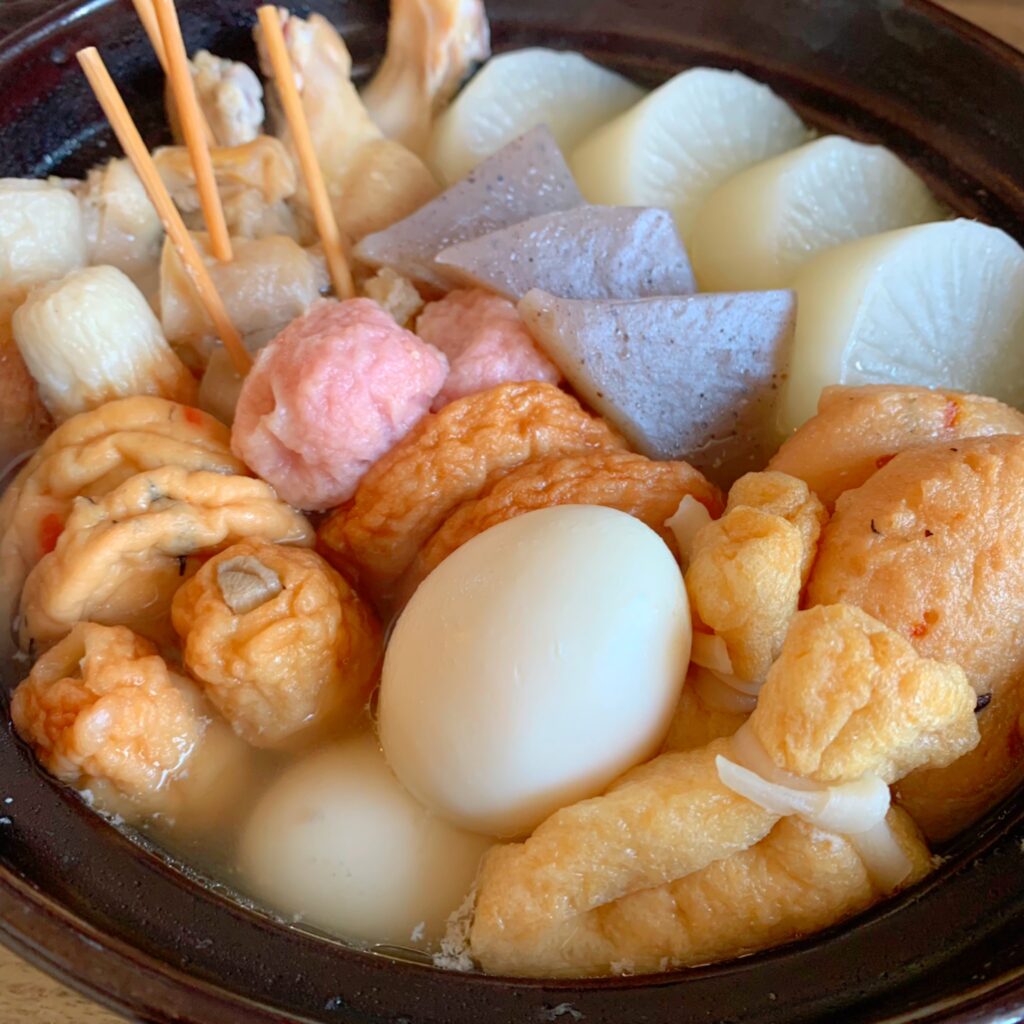
おでんスープ (Oden Soup)
🍢 Exquisite Japanese Oden Soup 🍢
Oden is a profound and indispensable hot pot dish on Japanese dining tables. This richly flavored oden soup can be surprisingly easy to recreate and enjoy authentically in your own home.
For Japanese people, Oden is deeply cherished as a soul food. The steam rising from home dining tables, specialty shops, and the counter of convenience stores in winter is a familiar and beloved winter tradition.
On a bitterly cold winter day, hot oden is the ultimate luxury. With just one bite, its warmth and the gentle umami of the broth will slowly and thoroughly warm both your chilled heart and body to the core.
The main ingredients are classics like chicken on the bone, beef tendon (gyūsūji), konnyaku (konjac), and a wide variety of fish cakes (nerimono).
However, each region has its own unique characteristics, often adding items such as kombu (kelp), sausages, and sticky taro roots (satoimo).
Selecting your favorite fish cakes—like chikuwa, satsuma-age, and hanpen—and creating your own signature oden is one of the greatest pleasures.
Japanese oden soup recipe is completed by mixing the extracts from the ingredients. The aroma and taste of Japanese oden soup recipe will change depending on the ingredients you use.
Please enjoy the rich aroma and the subtle difference in flavor that constantly evolves depending on the ingredients you use.
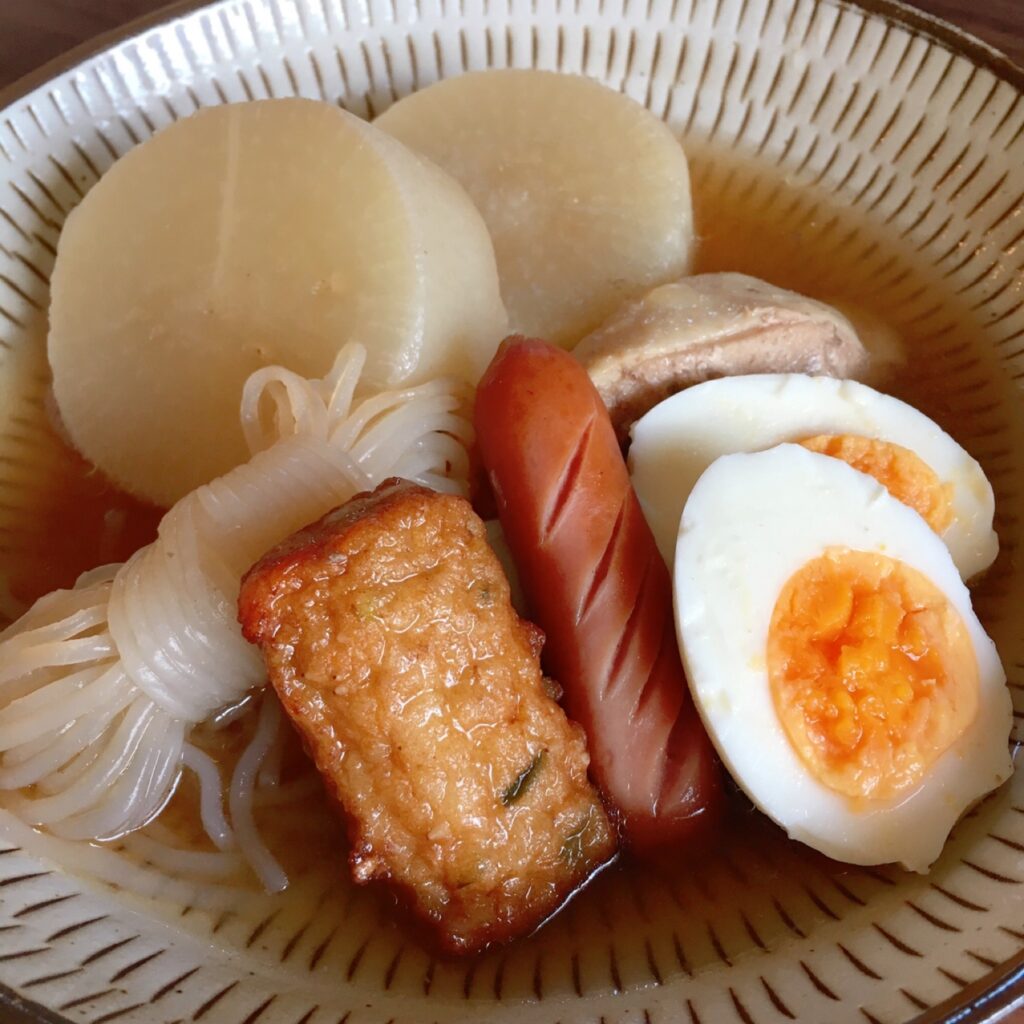
NUTRITION FACTS : Japanese Oden Soup Recipe

TOTAL NUTRITION VALUE
- 974 Calories
- Protein 88.6 g
- Total Fat 51.7 g
- Total Carbohydrates 48.0 g
- Sodium 10.7 g
ODEN SOUP
- 37 Calories
- Protein 2.0 g
- Total Fat 0 g
- Total Carbohydrates 7.0 g
- Sodium 8.4 g
INGREDIENTS : Japanese Oden Soup Recipe (3SERVINGS)
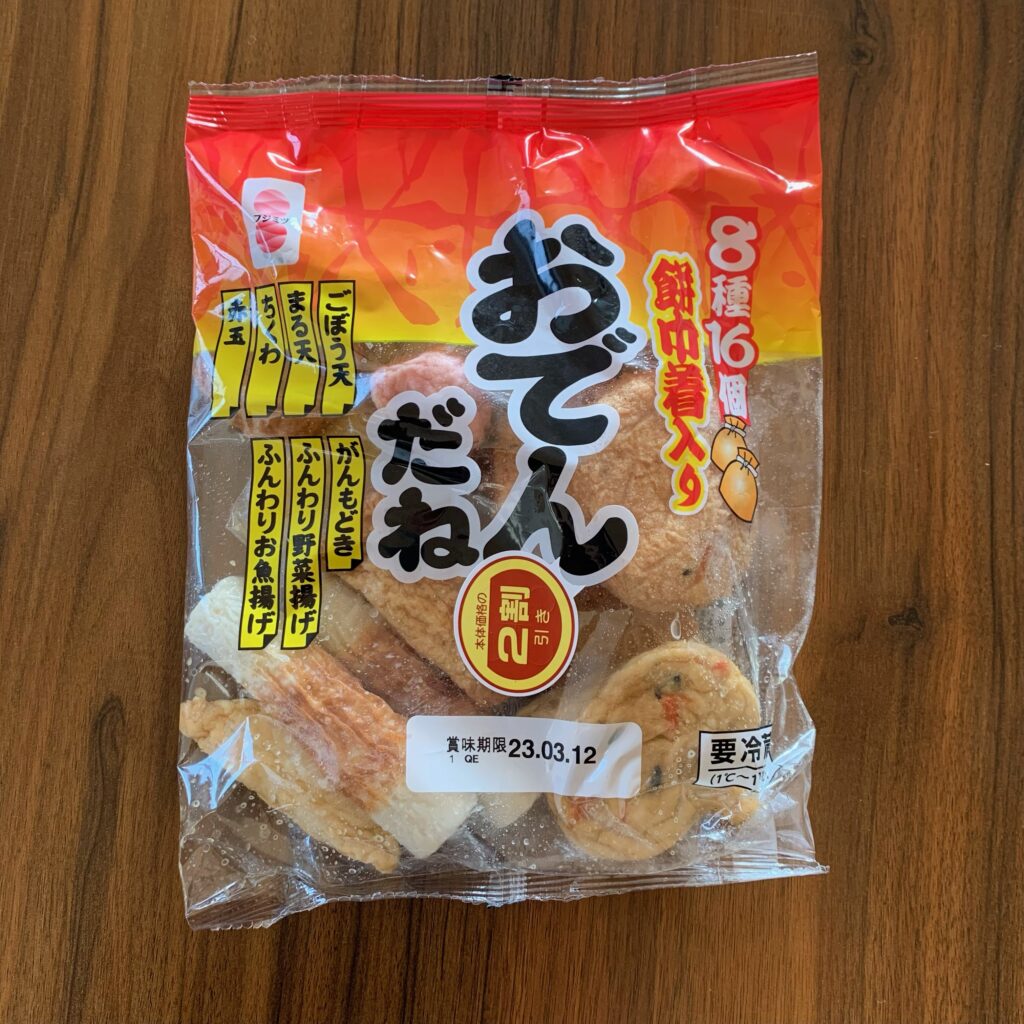
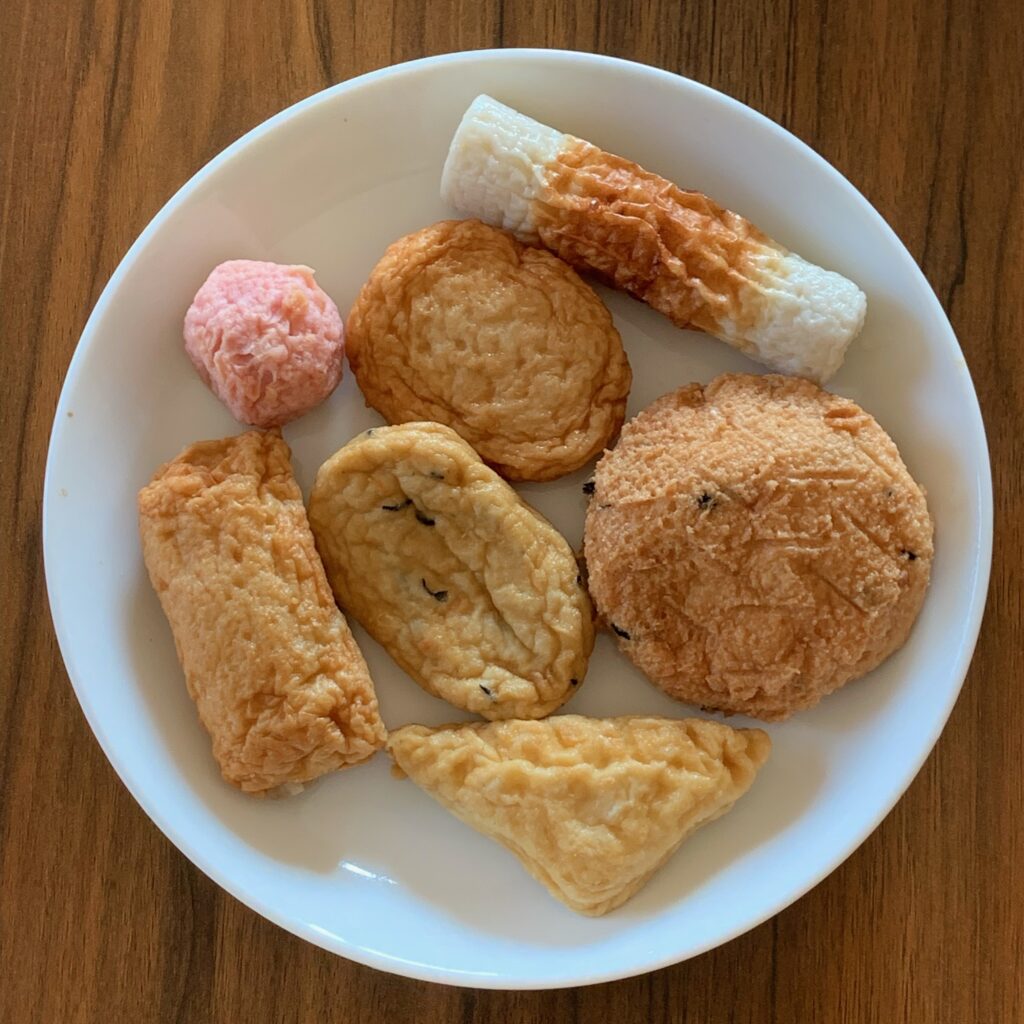
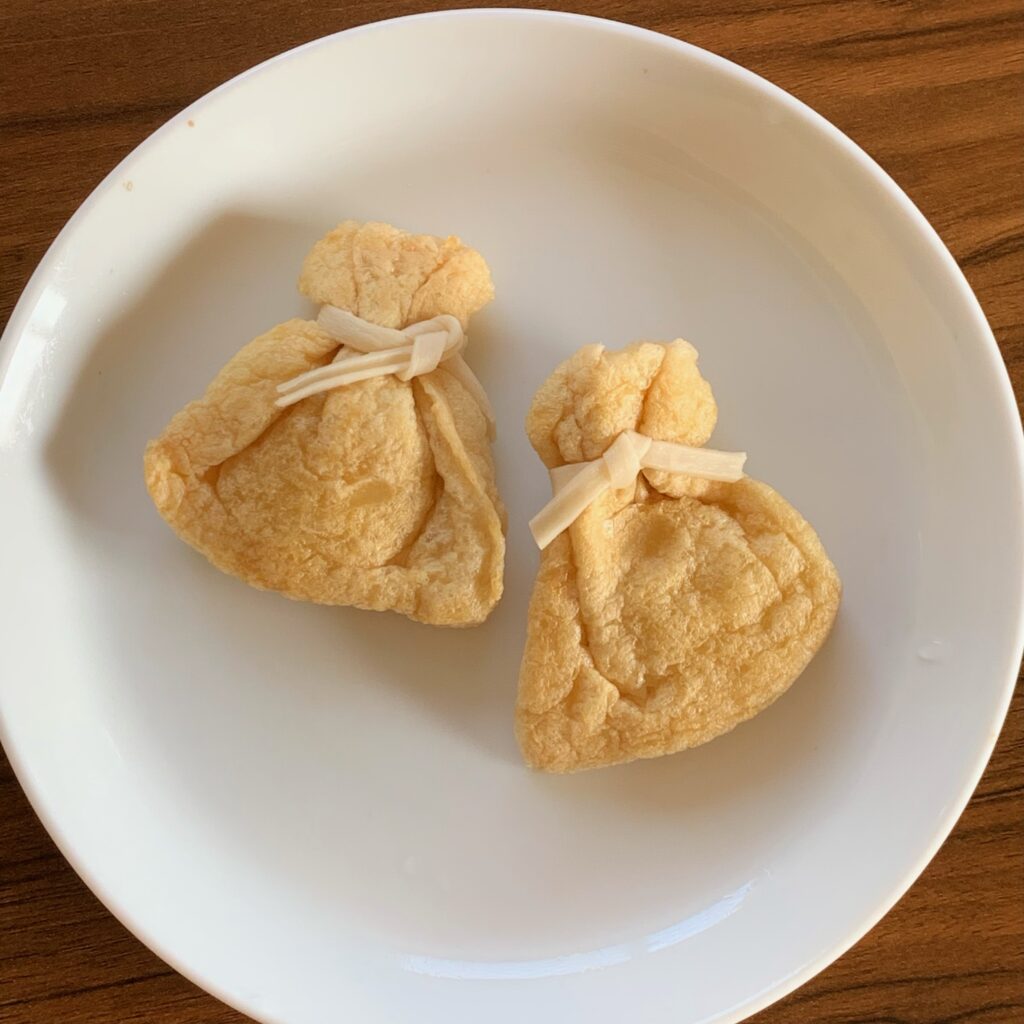
- Fish cake (chikuwa, gobouten, satumaage, tsumire) 120g
- Deep-fried tofu 100g
- Konjac 220g
- 3 Eggs
- ☆Chicken wings 200g
- ☆Japanese daikon radish 500g
- ☆Beef tendon (boiled and skewered) 80g
- ☆Water 500g~700g
- ♪Dashi stock granules (hondashi) 5g
- ♪Salt 4g
- ♪Sugar 4g
- ♪Light soy sauce 15g
- 2 Mochiiri-kinchakus
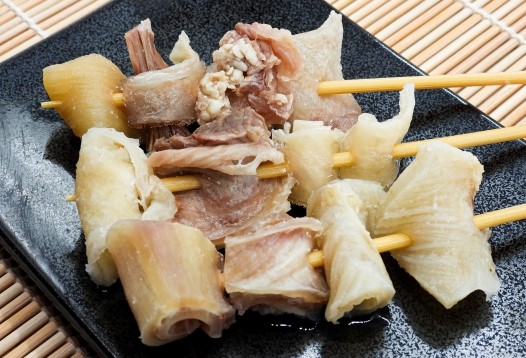
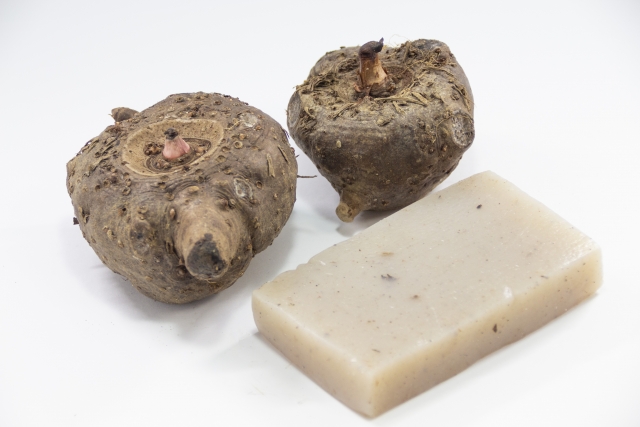
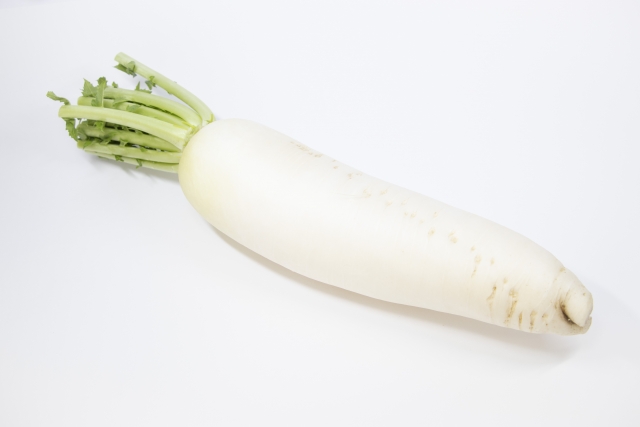
About dashi
Dashinomoto = Dashi stock
Hondashi is one of the product names of Dashinomoto.
What is Japanese oden soup made of?・・・ Oden soup only requires four ingredients: Dashi stock granules, Salt, Sugar, and Light soy sauce. It’s very easy to make. The salt concentration of oden soup should be around 1.1 to 1.3%. If the flavor is too weak, it will not taste good, so be sure to keep to the amount of water. If it boils down and becomes too salty, add hot water to adjust.
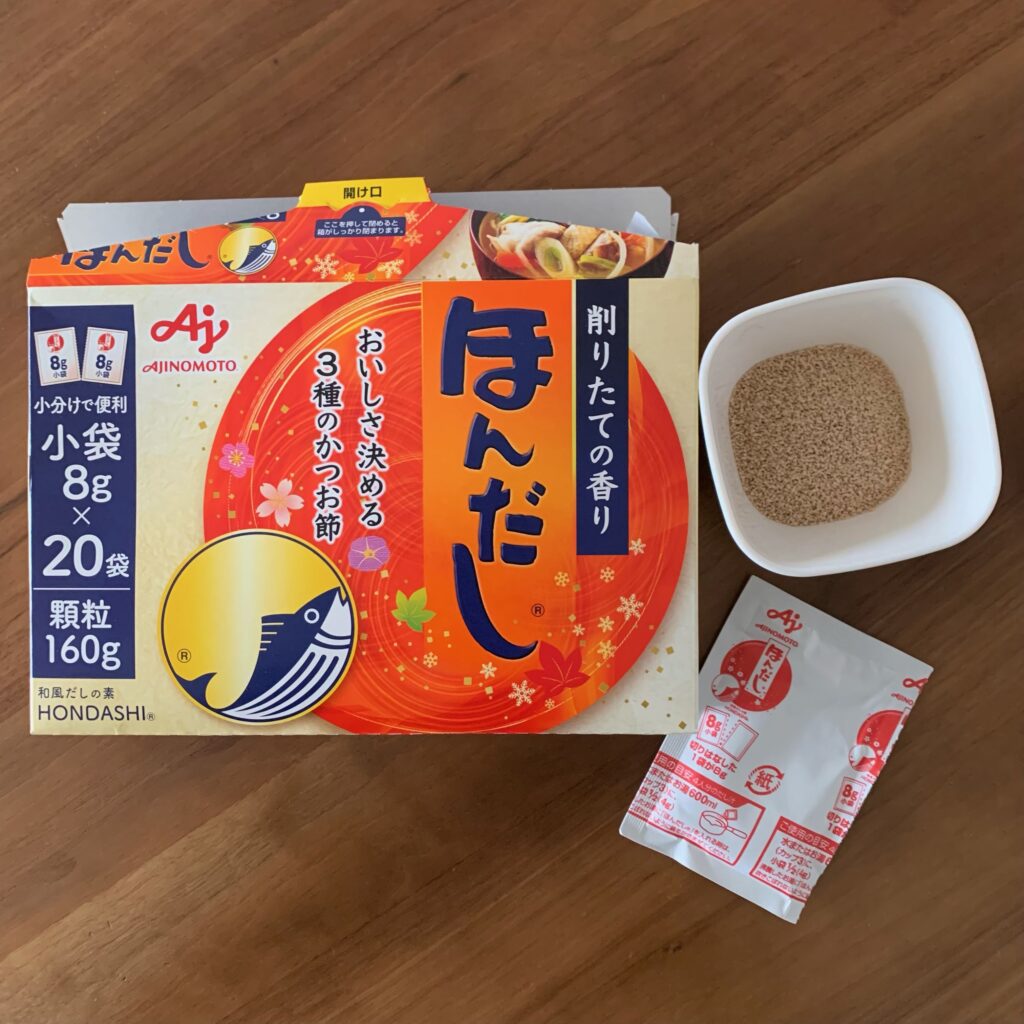
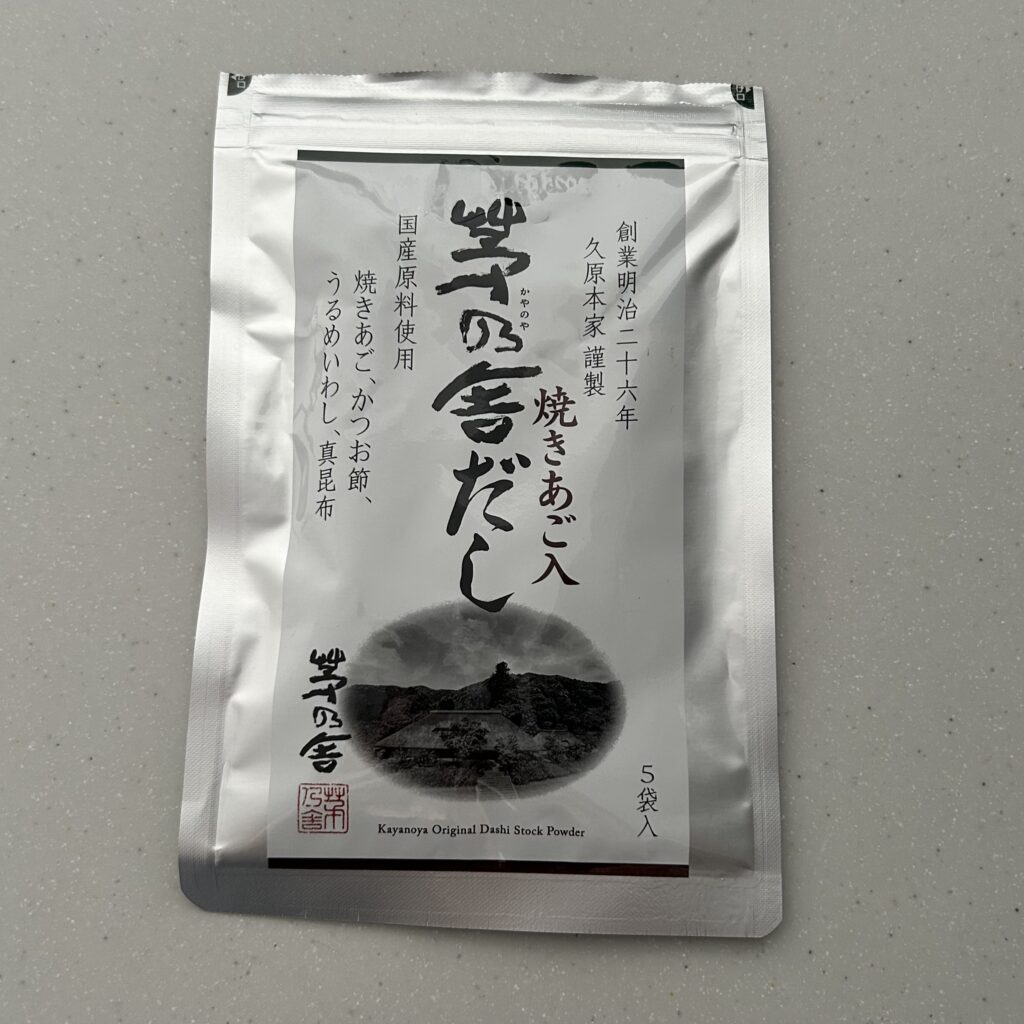
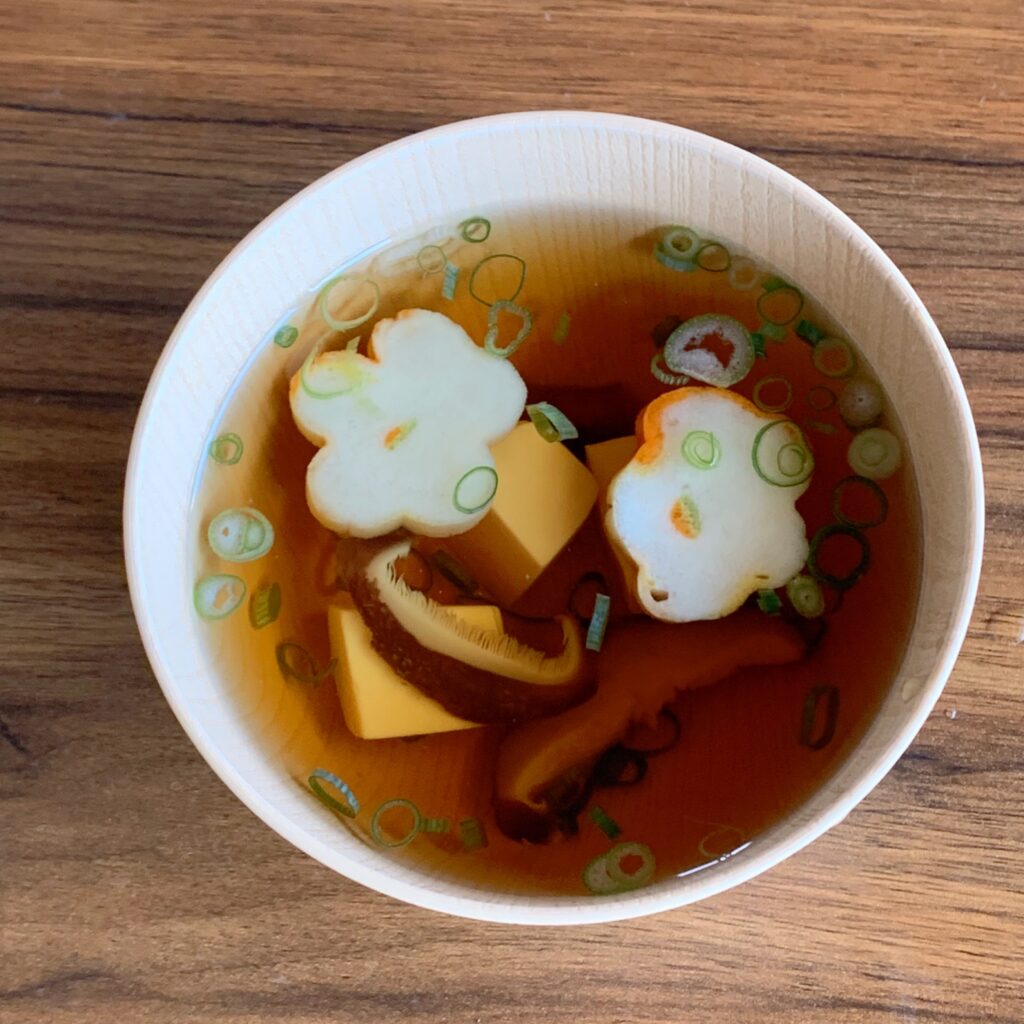
How to make Japanese Oden Soup
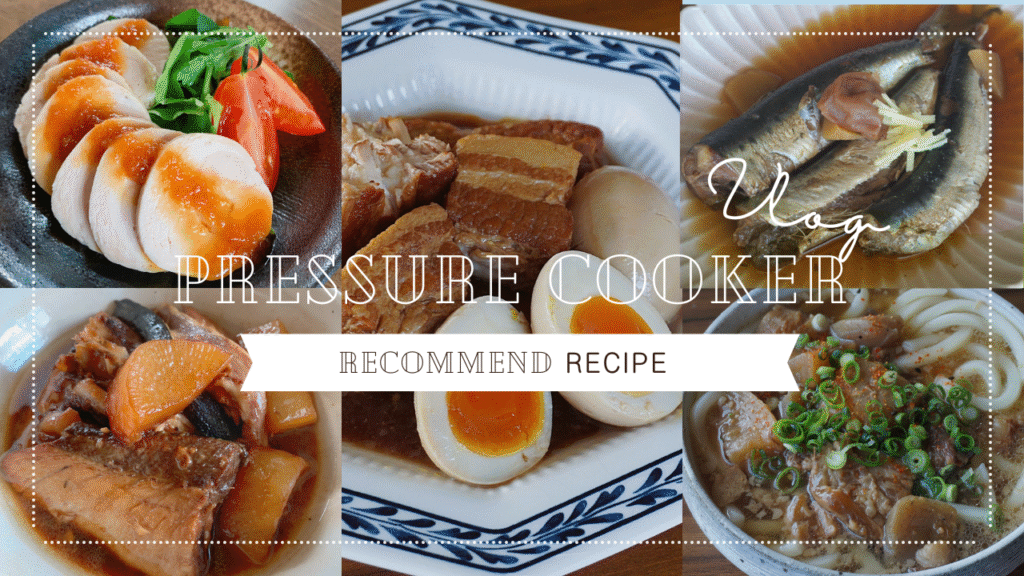
Step1
- Put chikuwa, gobouten, satsumaage, tsumire, deep-fried tofu and boiling water in a bowl, wait 2 minutes and discard the water. Soaking in hot water removes excess oil from the surface of the fish cakes, making it easier for the flavor to penetrate.
- Boil the konnyaku for 1 minute to remove the lye. This process is called “アク抜き=akunuki“. There is no harm in eating the lye, but it may leave a harsh konnyaku flavor. Harsh flavor is one of the senses of taste.The harsh flavor has a feeling close to bitterness, but in some cases it makes you feel uncomfortable.
- Make a lattice incision on the surface of the konnyaku.This is to make it easier for the flavor to soak in.
- Add eggs to boiling water and boil for 9 minutes. Soak in cold water for a while, then peel off the shell.
- Pour hot water over the Chicken wings. When the surface becomes whitish, give it to a colander. This way the soup will not become cloudy when simmering.
- Cut the Japanese daikon radish into 3 cm, about 90 g pieces.
- Put chicken wings, Japanese daikon radish, beef tendon, and water in a pressure cooker and pressurize for 7 minutes. Wait for the pressure to release naturally. If you open the lid and see bubbles, it’s lye. Remove the lye from the broth.
Step2
- Remove the chicken wings, radish, and beef tendons from the pressure cooker and arrange them in the clay pot along with the chikuwa, gobouten, satsumaage, tsumire, deep-fried tofu, konjac, and eggs.
- Mix the dashi stock granules, salt, sugar, and light soy sauce and pour into a clay pot.
- If the fire is strong, the dashi will become cloudy. Maintain over medium heat. Simmer for about 40 minutes. It’s best to leave it for a few days instead of eating it right away to let the flavors soak in. (Other than mochiiri-kinchakus)
- If you boil the mochiiri-kinchakus for a long time, mochi will melt , so add it when you eat it and let it simmer for a while.
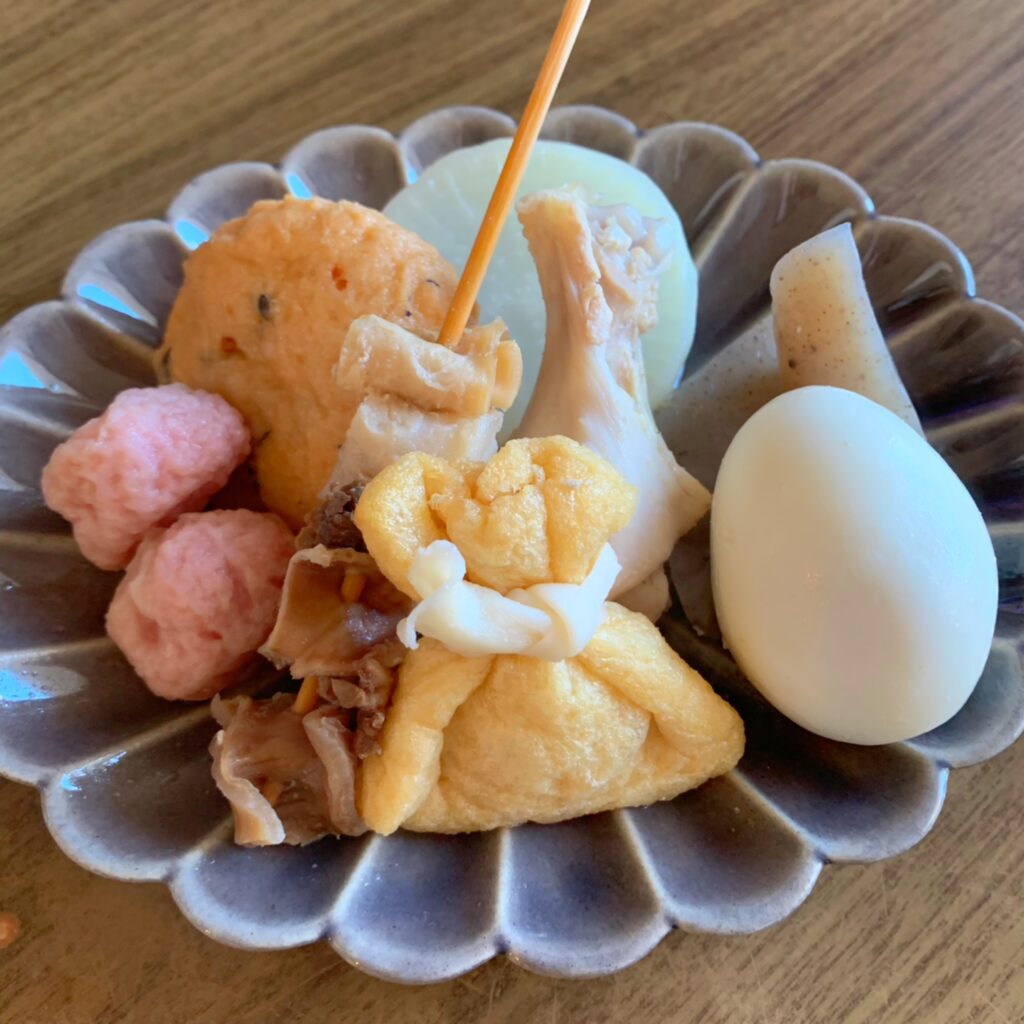
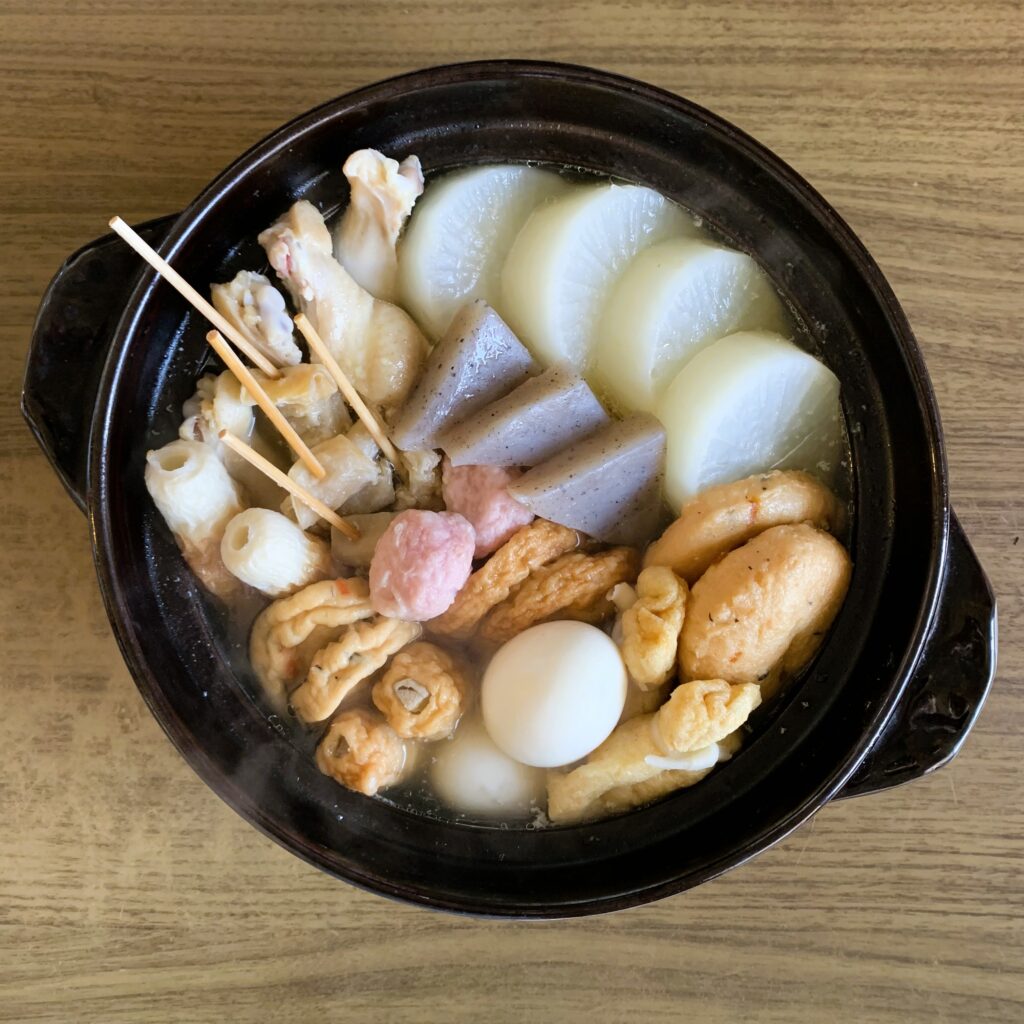
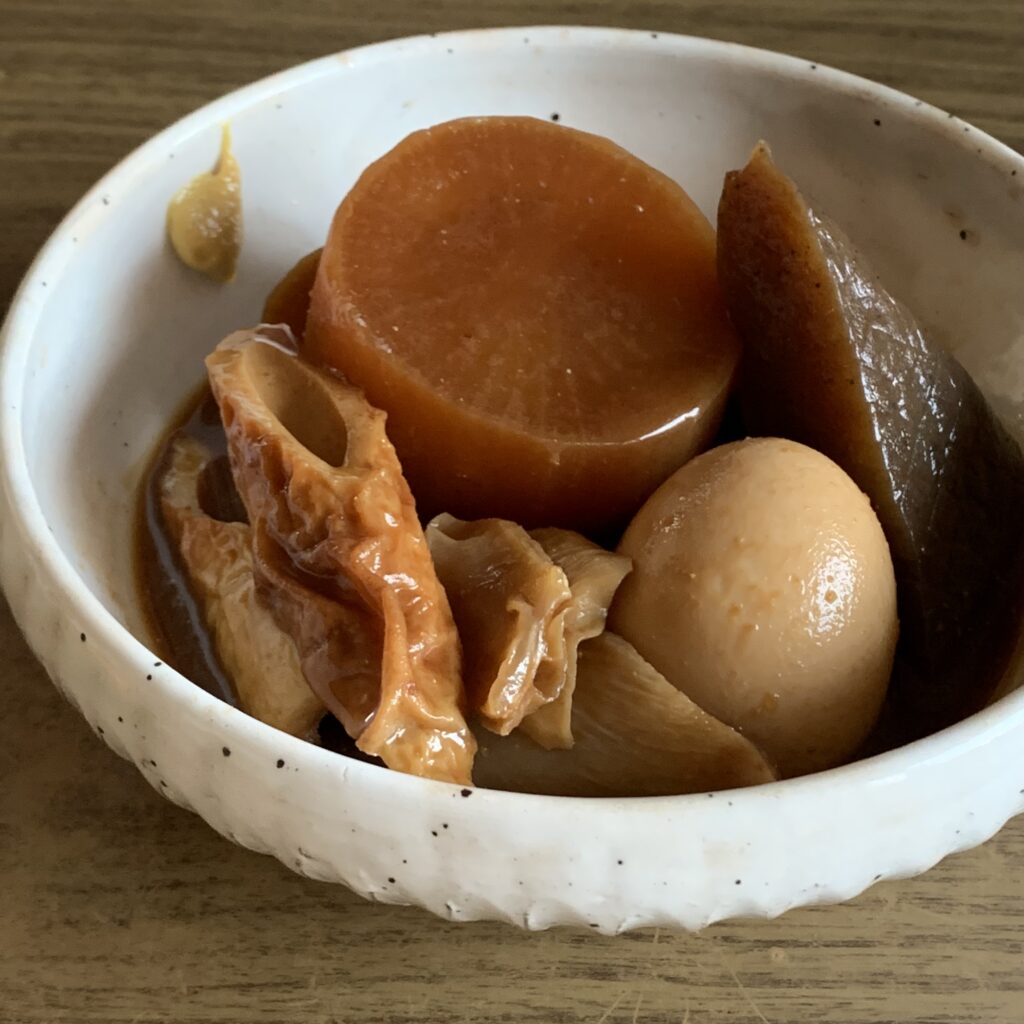
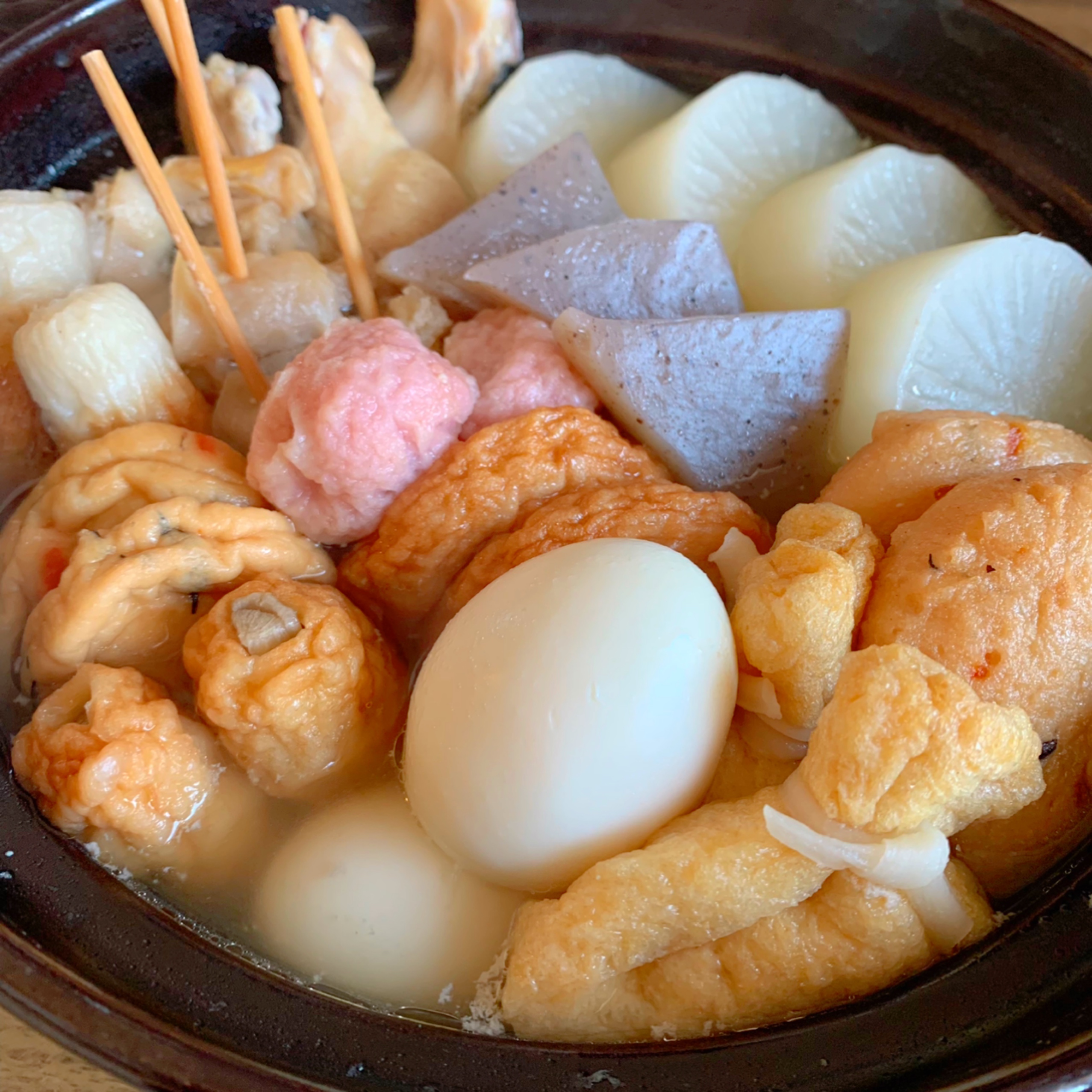

コメント